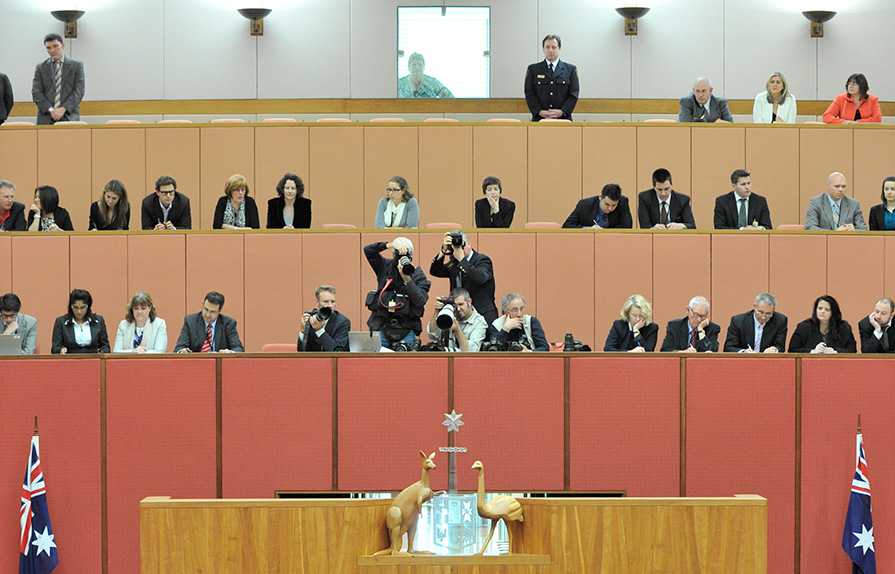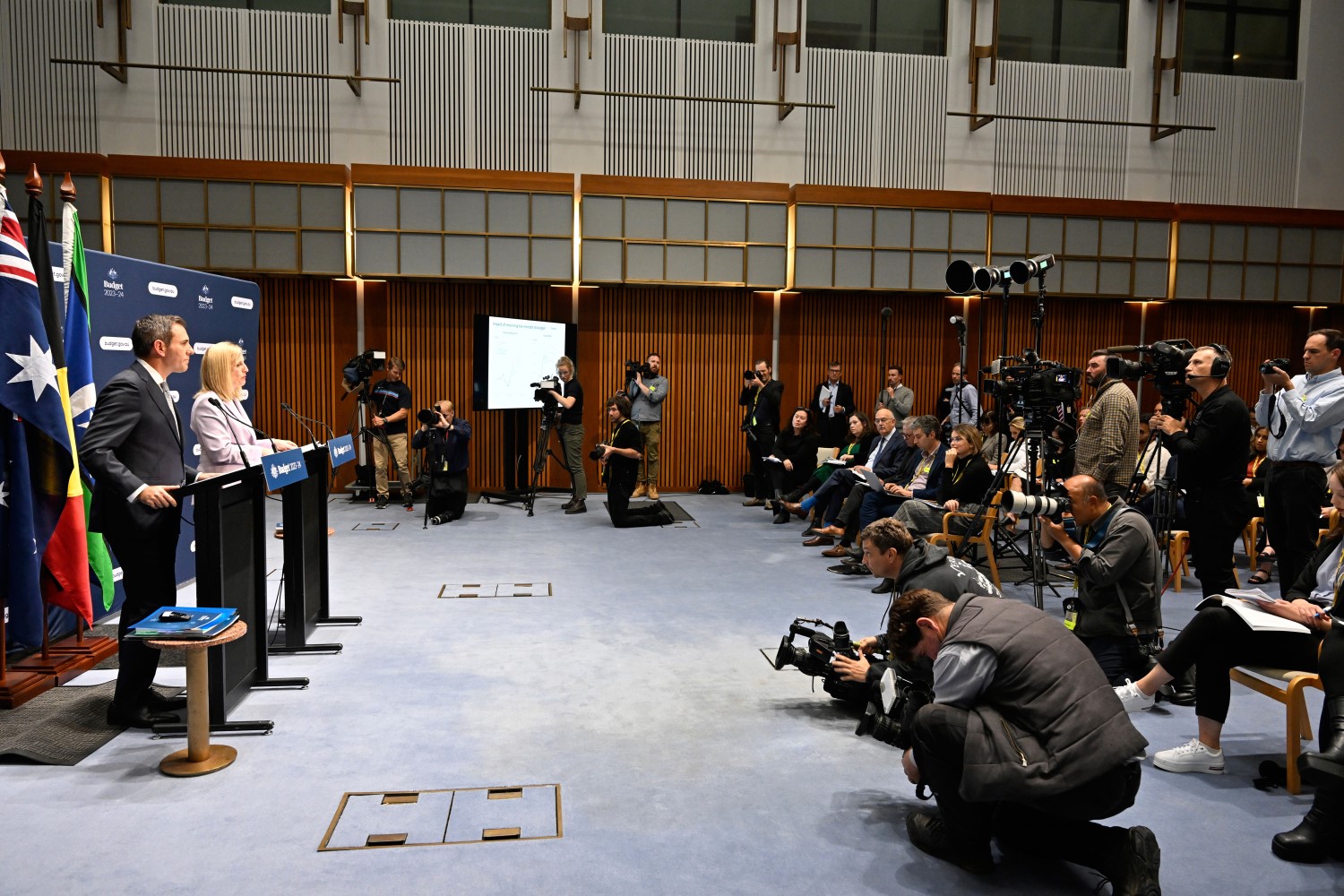Press gallery
Understand the role of the press gallery and its relationship with members of parliament and the public with this fact sheet.
What will I learn?
- The press gallery is a group of about 250 journalists and staff who work for media companies.
- The press gallery gather information and publish stories about what happens in the Australian Parliament.
Curriculum alignment
Year 9 ACHCK076
The Senate press gallery

DPS Auspic
Description
A group of over 30 journalists sit in the tiered seating above the Australian Senate in the press gallery. The press gallery is a special viewing area behind the President's chair in the Senate. Most of the journalists have notebooks and pens, and some have cameras taking photos of the meeting of the Senate happening below.
Copyright information
Permission should be sought from DPS AUSPIC for third-party or commercial uses of this image. To contact DPS AUSPIC email: auspic@aph.gov.au or phone: 02 6277 3342.
The Senate press gallery

DPS Auspic
Description
A group of over 30 journalists sit in the tiered seating above the Australian Senate in the press gallery. The press gallery is a special viewing area behind the President's chair in the Senate. Most of the journalists have notebooks and pens, and some have cameras taking photos of the meeting of the Senate happening below.
Copyright information
Permission should be sought from DPS AUSPIC for third-party or commercial uses of this image. To contact DPS AUSPIC email: auspic@aph.gov.au or phone: 02 6277 3342.
What is the press gallery?
The press gallery is a group of about 250 journalists and staff who work for media companies and have offices in Parliament House. They collect and publish information in newspapers, social media, television and radio on the work of the Australian Parliament.
The press gallery also describes the area in Parliament House where journalists work, including offices, studios and special viewing areas in the Senate and House of Representatives.
Role
The press gallery gathers information and publishes stories about what happens in Parliament. These stories might be about Question Time, policies and decisions of the government, the opposition, or other members of parliament.
The press gallery finds out about the work of parliament by:

The Treasurer and the Minister for Finance talking to the media about the Budget
Penny Bradfield/DPS Auspic
The Treasurer and the Minister for Finance talking to the media about the Budget

Penny Bradfield/DPS Auspic
Description
The Treasurer and the Minister for Finance standing at podiums holding a press conference about the Budget. The Budget is the Australian Government’s plan for collecting and spending money. They are facing an audience of journalists and photographers. There are many people in the room with multiple cameras set up, and several people are taking notes or recording the event.
Copyright information
Permission should be sought from DPS AUSPIC for third-party or commercial uses of this image. To contact DPS AUSPIC email: auspic@aph.gov.au or phone: 02 6277 3342.
- observing the Senate and the House of Representatives
- observing Senate estimates and committee hearings
- interviewing members of parliament in the radio and television studios in Parliament House
- interviewing members of parliament when they arrive or leave Parliament House – this is known as a doorstop interview
- attending and asking questions at press conferences called by members of Parliament.
It is the role of the press to investigate and uncover the facts behind events and examine information. They have a professional responsibility to investigate and report on the facts and the information they find.
The work of the press gallery helps keep Australians up to date about government decisions and the work of their elected representatives. This helps the public to scrutinise – closely examine – the government and their representatives.
The power of the press
The public depends upon the press to examine the work of the Parliament and the government. Members of parliament depend on the press to inform the public about what they say and do.
Journalists and media organisations are free to decide what they will publish and how they will publish it. They decide which members of parliament they will interview and publicise. As a result, the press has a lot of influence on public opinion, and members of parliament are careful in the way they work with journalists.